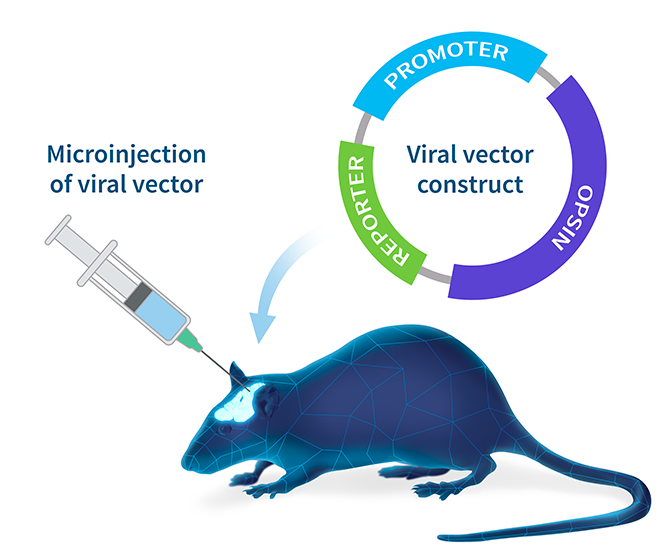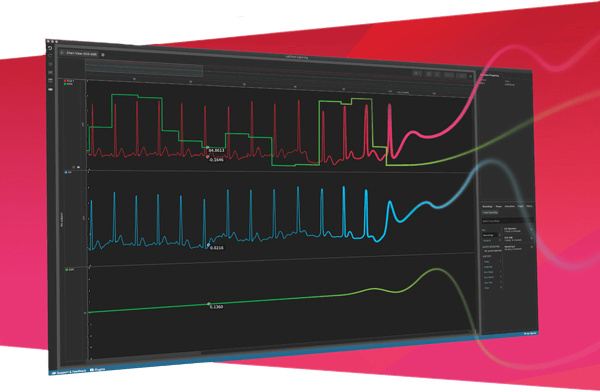Placement of an Optogenetics Telemeter within the Rat Brain
Instructions on implanting a telemeter for optogenetic stimulation
and biopotential recording (EEG, ECG, and EMG).
Surgery was performed at the University of Otago by Dr. Conor Underwood. Surgery narrated by Mark de Reus, Head of Support at ADInstruments.
Telemeter:
Surgical Equipment:
- Tissue Forceps 1x2 toothed
- Anatomical Forceps
- Metzenbaum Baby Scissors
- Small Screwdriver
- Needle Holder with suture cutters
- Trocar with a 45-degree bevel
- A second set of tissue forceps
- Needle holder
- A selection of clamps
- Straight #5CO forceps
- Curved #7 Forceps
- Straight sharp surgical scissors
- #3 scalpel handle
- Scalpel blade
- PE tube
- Shaver
- Monofilament absorbable suture
- Silk suture
- Surgical drape
- Sterile wrapping plastic
- Cotton swabs
- Gelfoam
Disinfection:
- Cidex OPA
- Saline or sterile pyrogen-free water
- Chlorhexidine
- Betadine or Iodine
- 100% Ethanol
Hardware:
- Pulse Oximeter
- Temperature Monitor
- Heating Mat
- Rectal Probe
- Stereotactic Frame
- Two lines of Isoflurane
- Gooseneck Lamp
- Microscope
Anesthetic:
The rat was anesthetized using inhaled Isoflurane.
Procedure:
Telemeter disinfection [00:01:07]
In this part of the procedure, you will prepare the telemeter for surgery.
Shortening the fiber [00:01:07]
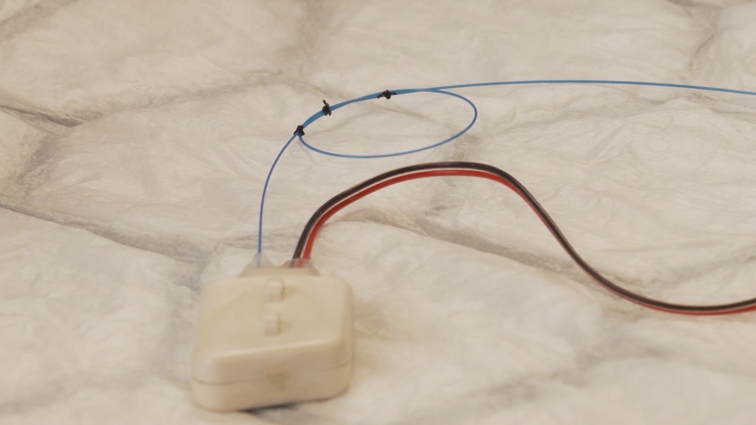
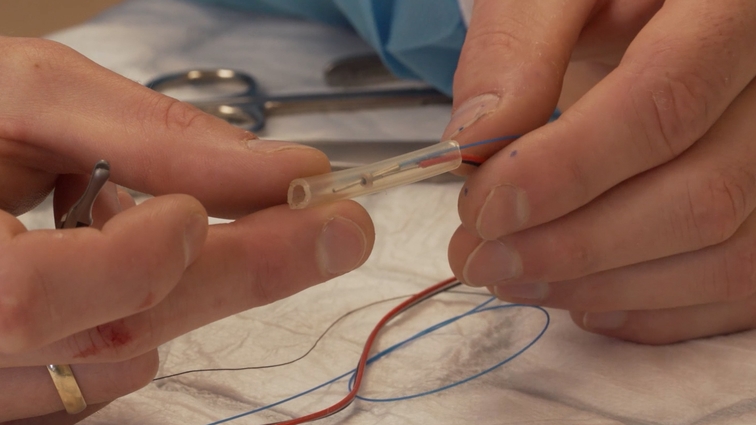
- Shorten the length of the fiber without cutting it by creating a loop. Ensure that the loop is close to the telemeter body as it will lie within the animal's body. The size of the loop will depend on the desired length of the fiber.
- Place the ends of the fiber optic lead and biopotential leads within a section of PE tubing. Use a set of bent clamps to hold the cables in place.
- Fasten the telemeter loop in place with 2-3 sutures.
Disinfecting the telemeter [00:03:00]
The TR58AB Optogenetics Biopotential Telemeter is sterile inside its packaging. Disinfect the device if it was handled in a non-sterile environment before surgery.
- Transfer the telemeter into a bottle or container, handling the device by the body. Fill the bottle and cap with a strong disinfectant, such as Cidex OPA, and soak the device for 20 minutes.
- Rinse the bottle and telemeter three times with sterile pyrogen-free water or saline solution.
Surgical setup and animal preparation[00:04:25]
In this part of the procedure, you will prepare the surgical area for a clean surgery. You will also anesthetize and disinfect the animal for surgery and attach monitoring devices.
- Clean the surgical area and instrument tray with chlorhexidine spray, including the microscope, lights, and stereotactic frame.
- Place a rag down on the surgical area to remove fur easily after shaving the rat.
Anesthetizing and disinfecting the animal [00:06:21]
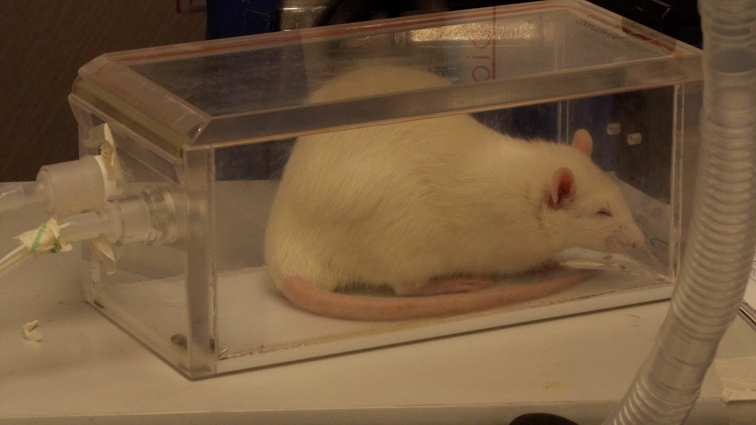
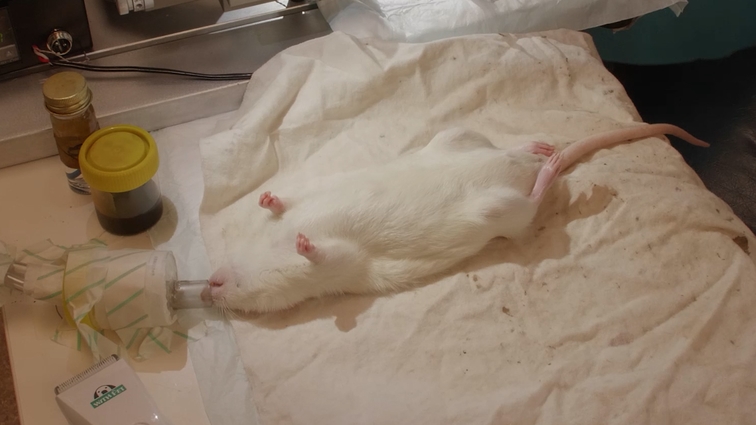
- Place the rat within the induction box and anesthetize with 5% isoflurane.
- Transport the anesthetized animal to the surgical area, and place the rat’s nose within the isoflurane tube. Reduce the concentration to 2.5%-3%. Ensure that the rat remains anesthetized by performing regular toe pinches. Note: Use the lowest concentration of isoflurane as long as the animal remains unconscious.
- Lubricate and insert the rectal probe. Taping the probe to the rat’s tail will prevent it from moving during surgery.
- Attach the pulse oximeter to the foot and secure it with tape.
- Administer antibiotics and anti-inflammatories subcutaneously. Note: In this surgery, Rifampin and Carprofen were administered.
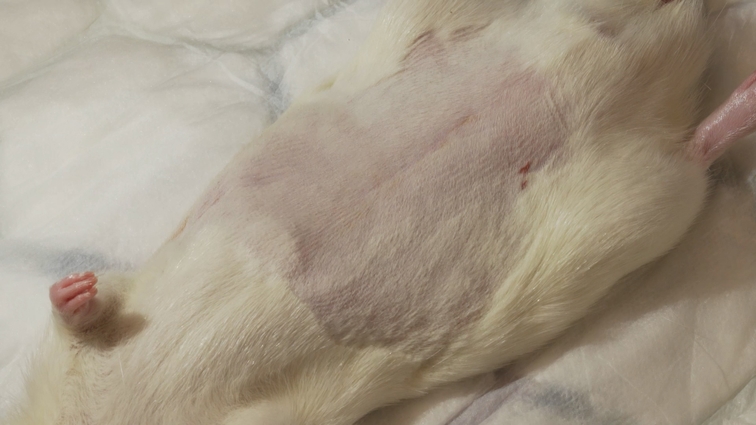
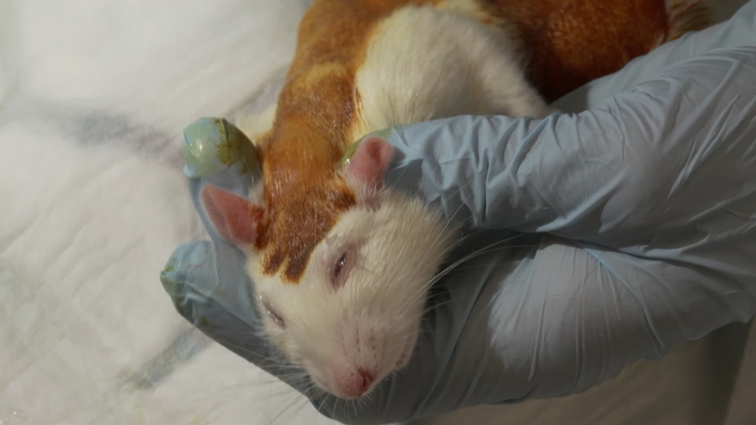
- Shave the rat’s abdomen, head, and a pathway of fur between the abdomen and the head for the telemeter leads. Remove the rag and shaved fur from the surgical area. Note: Use a masking tape or lint roller to remove excess fur.
- Apply eye lubricant to the rat’s eyes.
- Clean the surgical sites - the abdomen, head, and connecting area - with betadine or iodine.
- Clean the surgical sites with 100% ethanol.
Unpack surgical equipment [00:12:43]
- Clean the surgical area and instrument tray with chlorhexidine spray, including the microscope, lights, and stereotactic frame.
- Place a rag down on the surgical area to remove fur easily after shaving the rat.
Procedure begins: inserting the telemeter [00:14:12]
In this part of the procedure, you will create an incision in the abdomen of the rat and insert the telemeter.
Skin incision [00:14:12]
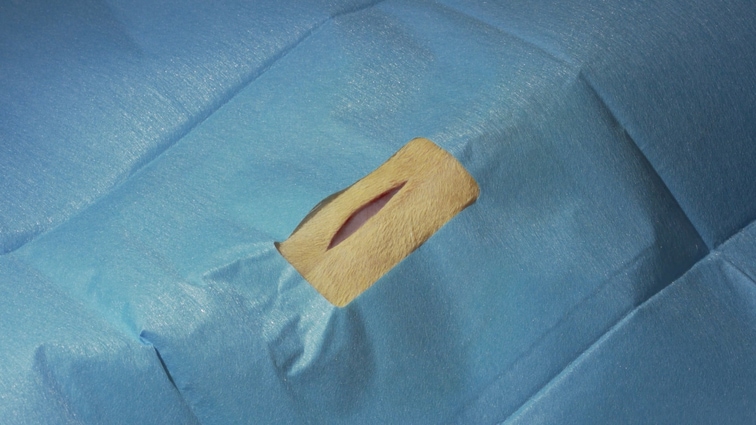
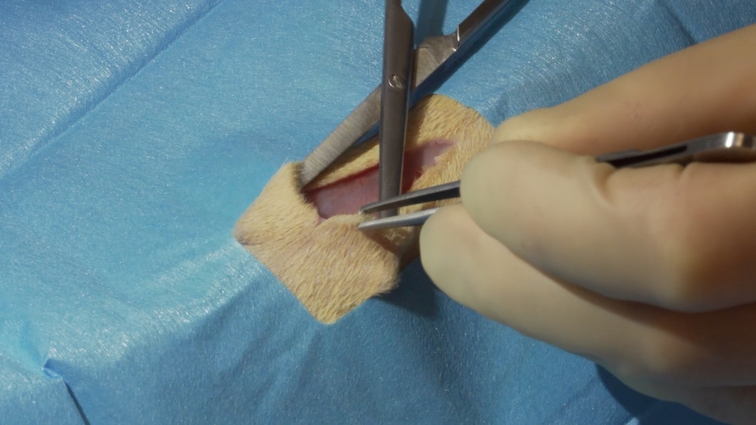
- Create an incision in the abdomen using the scalpel. This incision should be large enough to fit the telemeter body within the rat abdomen. The dimensions of the telemeter body are 31.5 x 24 x 11 mm. Note: The incision can be lengthened with scissors if necessary.
- Blunt dissect the tissue underneath the skin with the Metzenbaum scissors.
- Use clamps to keep the wound open.
Muscle wall incision [00:14:12]
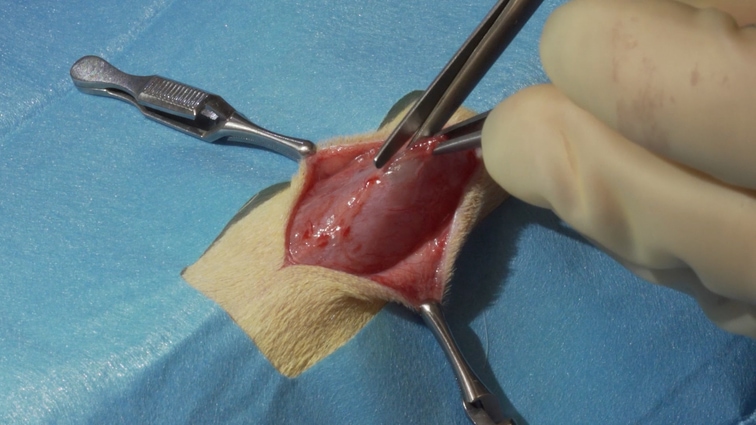
- Identify the linea alba, a verticle line of white connective tissue on the midline of the abdomen. This line is where you should make the incision.
- Grab the muscle wall with forceps, and lift it away from the organs underneath to prevent damaging them. Create your initial midline incision in the abdominal muscle wall through the connective tissue.
- Expand the initial incision using small cuts with a pair of scissors. Continue until the incision is large enough to fit the telemeter body.
Inserting the telemeter [00:17:52]
- If you have disinfected your telemeter, remove the telemeter from the bottle with sterile forceps. Carefully lift the leads out, followed by the telemeter body. Place it on the sterile surgical area.

Tip: It is easier to grab the clip or PE tubing used to protect the tip of the leads during disinfection. Never lift the telemeter only by the leads, as this may damage them.
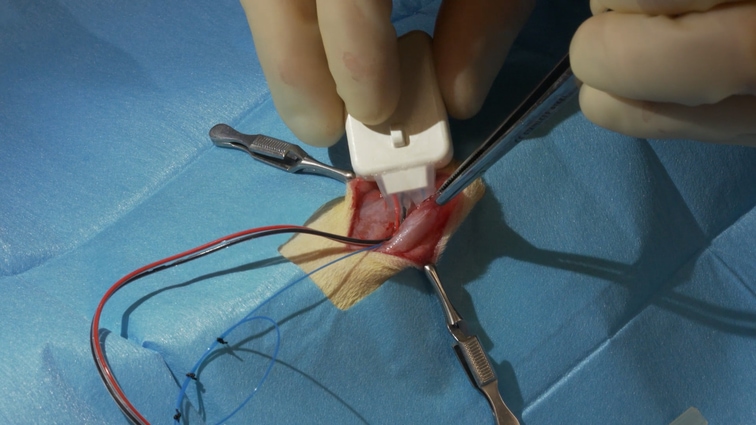
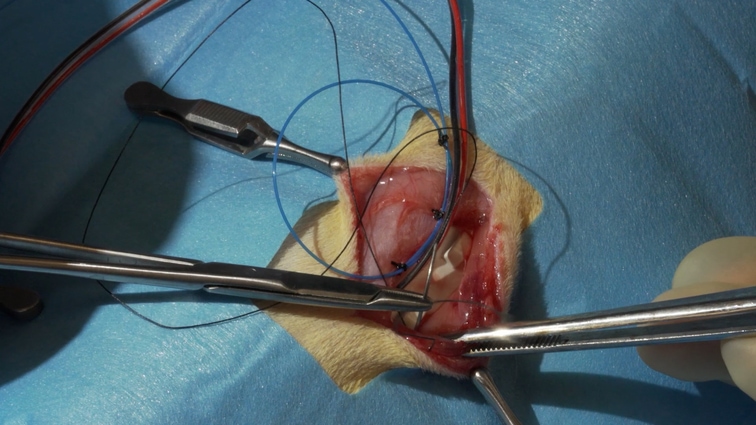
- Remove the PE tubing and clips protecting the lead tips.
- Insert the telemeter into the incision, with the lead-side of the telemeter body entering first. Note: You can reposition the telemeter after insertion.
- Using toothed forceps, grab the suture tabes on the telemeter body and reposition the telemeter. Note: This should be on the lower right side of the abdomen to prevent blocking the colon.
- Thread a silk suture through the muscle wall above one of the suture tabs.
- Thread the silk suture through the suture tab on the telemeter body.
- Thread a silk suture back through the muscle wall near the first pierce and tie a knot.

Tip: Be careful not to make this knot tight. Tight knots will cause necrosis of the muscle, and the suture will break through the muscle wall. Subsequent knots can be made tighter.
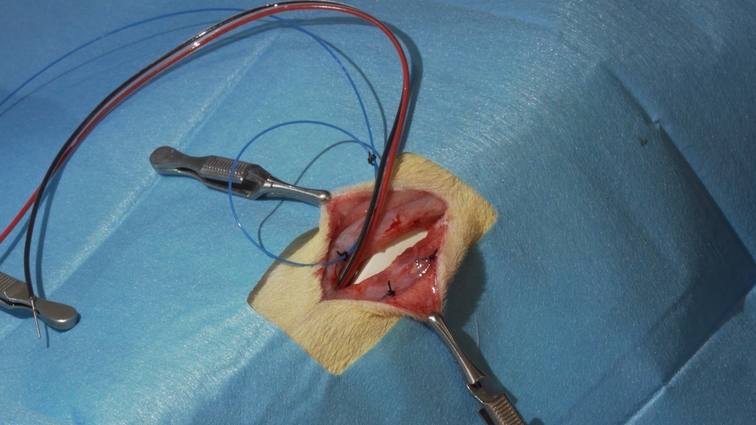
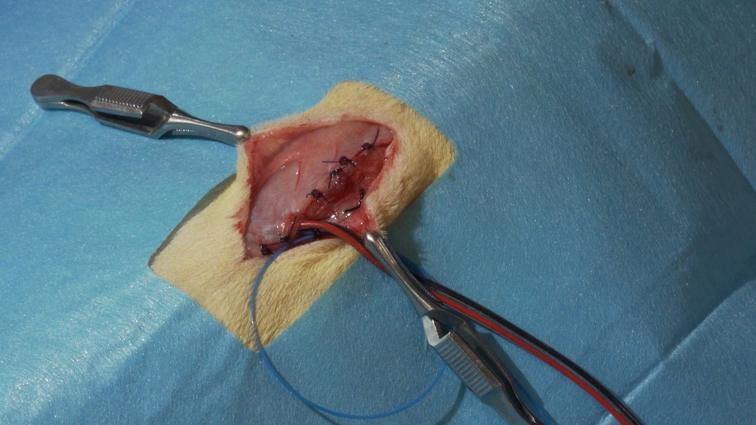
- Remove excess suture thread.
- Repeat this procedure for the second suture tab.
- Before closing the muscle wall, check that the suture holding the loop of the fiber optic cable is properly secure. Check there is enough fiber length in the abdomen for the cable to sit comfortably. This loop will sit in the subcutaneous space.
- Close the wound with a monofilament absorbable suture.

Tip: Place two monofilament suture ties between the edge of the wound and the cables exiting the telemeter. These sutures will prevent the cables from applying pressure to the edge of the wound and tearing it open further.
Tunneling the Cables with Trocar [00:26:50]
In this part of the procedure, you will create a subcutaneous tunnel. The cables will run through this tunnel from the abdomen to the back of the head.
- Blunt dissect the tissue underneath the skin with the Metzenbaum scissors, as far as the scissors will go.
- Use the beveled trocar to make a tunnel between the muscle and skin.

Tip: Taking the shortest subcutaneous route from the telemeter to the head should naturally take the trocar between the shoulders.
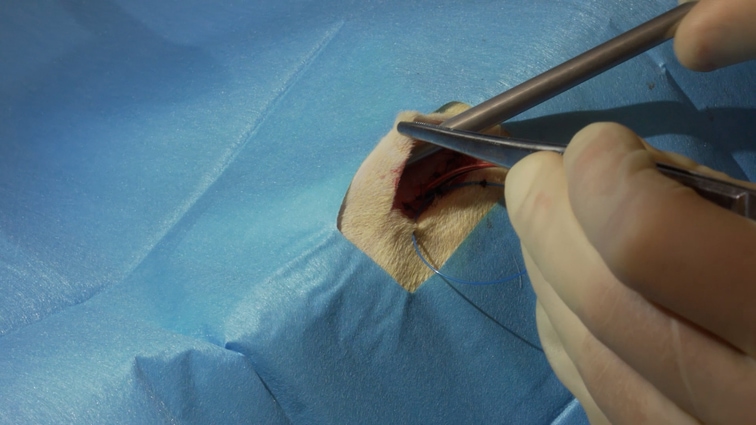
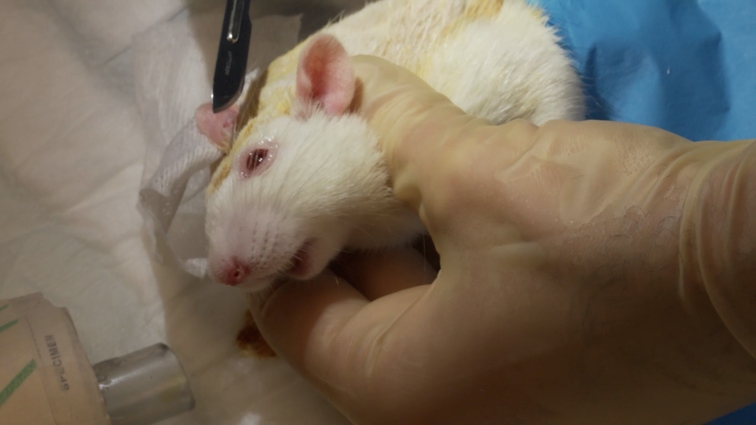
- Move the trocar tip forward subcutaneously by pushing and twisting it under the skin. Rotate the rat and lift the surgical drape as necessary.
- Once the trocar tip is at the back of the rat’s head, place sterile gauze underneath the head of the rat.
- Identify where the tip of the trocar is under the skin. Make a small incision through the skin at the back of the head.
- Push the trocar through the incision. Note: Any hand used to handle the animal during this process is no longer sterile and should not be used to touch clean areas.
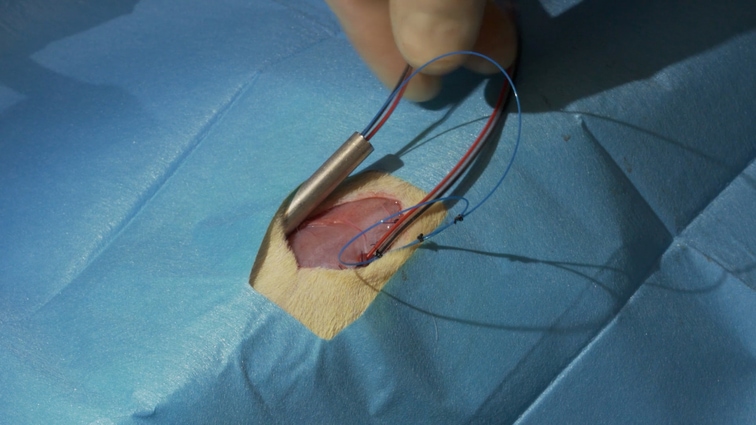
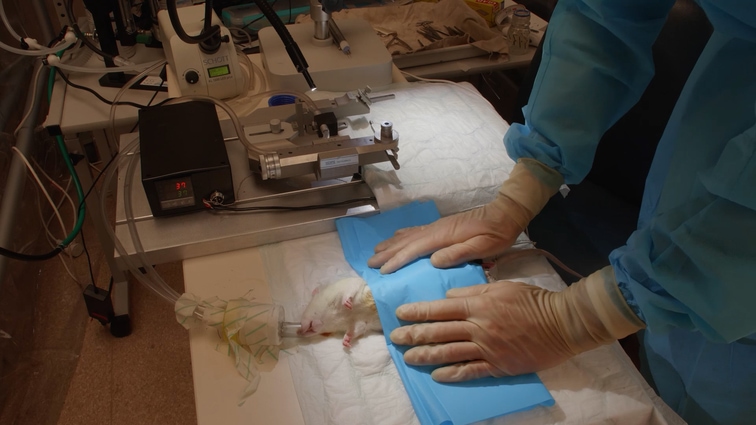
- Use a sterile glove to push the fiber optic cable and biopotential leads through the trocar. Do not remove the tip of the cables from the other end of the trocar so they do not touch non-sterile surfaces.
- Place gauze over the abdominal wound and fold the surgical drape down to view the rat’s head.
Moving to the stereotactic frame [00:29:54]
In this part of the procedure, you will secure the animal in the stereotactic frame for cranial surgery.
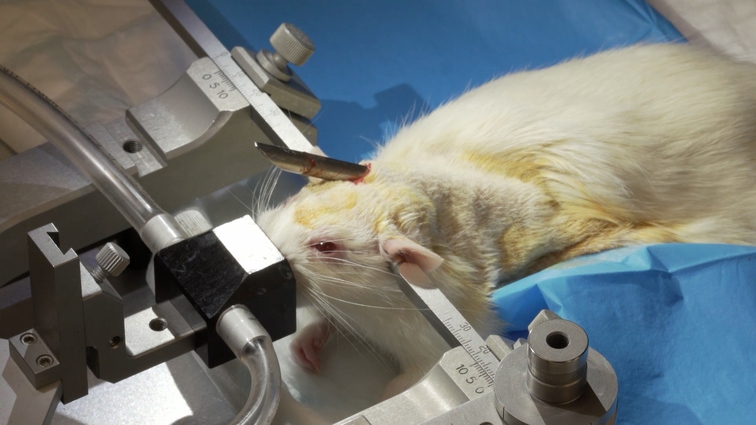
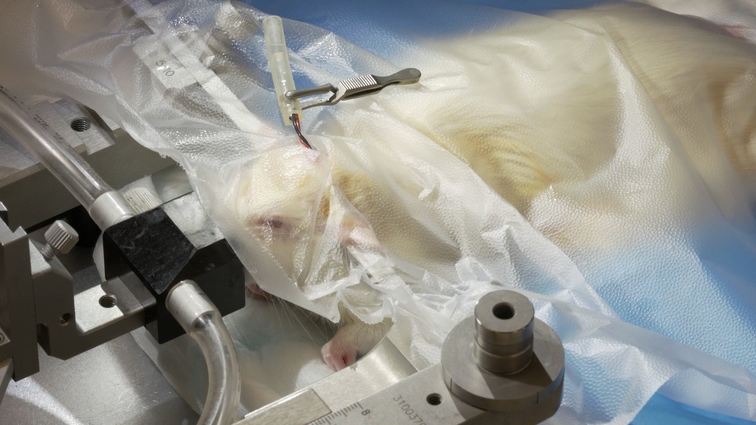
- Supply anesthetic gas to the stereotactic frame.
- Lift the rat, and rotate it so that the animal's abdomen is facing downwards. Place the rat’s nose within the anesthetic piece. Ensure that the surgical drape remains folded beneath the body to protect the abdominal wound.
- Use sterile wrapping plastic as a surgical drape over the animal’s head for cranial surgery.
- Confirm that the cables are within the trocar tip, then slowly remove the trocar from the subcutaneous space.
- Re-attach the PE tube to the telemeter cable tips to prevent damage. Ensure that the leads are above the surgical drape for easy access later.
- Move the heating pad underneath the animal.
Cranial surgery/preparing skull [00:33:04]
In this part of the procedure, you will create a cranial incision and ensure the skull is level for drilling.
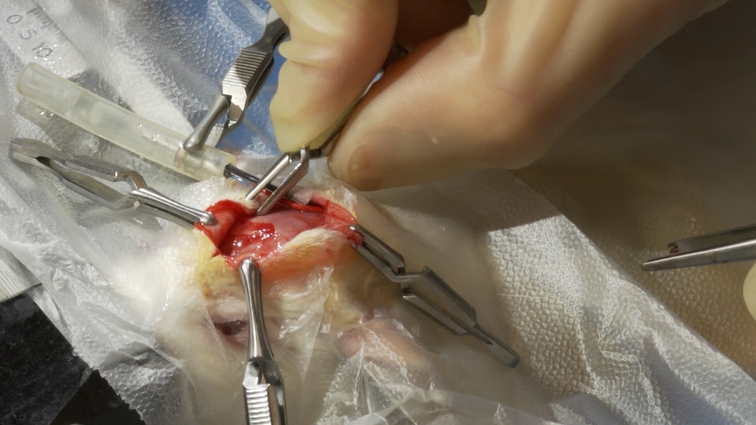
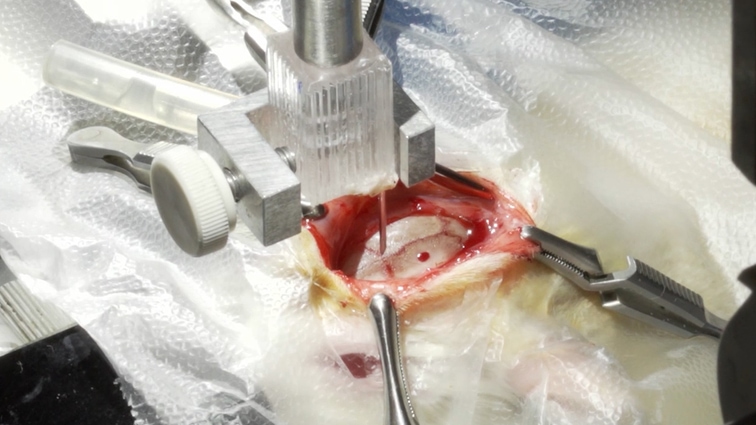
- Cut the plastic drape to reveal the rat’s head.
- Use a scalpel and scissors to make an incision in the skin at the back of the skull. Use scissors to remove any excess connective tissue.
- Pin the skin flaps back with clips to improve access to the skull.
- Using cotton swabs, move the connective tissue away from the top of the skull.
- Cauterize any bleeding capillaries.
- Using a microscope, scrape any excess connective tissue from the skull surface. Note: In particular, clear any tissue around the lambda and bregma cranial landmarks.

Tip: Use ethanol on a cotton swab if the connective tissue is difficult to remove. It is important to clean the skull completely to ensure strong adhesion of the dental cement.
- Ensure the skull surface is horizontally level. Use the micropositioner on the stereotactic frame to measure the depth of both lambda and bregma on the z-axis. Place the tip of the needle on each landmark and read the z-axis of the micropositioner.
- Reposition the rat as needed to achieve no more than 0.2 mm difference between lambda and bregma.
Drilling holes and inserting screws [00:40:24]
In this part of the procedure, you will drill a hole in the skull for the optic fiber. You will also insert the screws for securing the biopotential cables and dental cement.
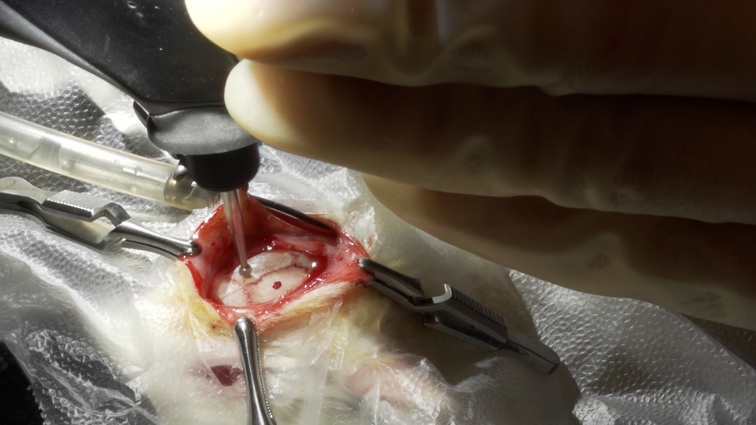
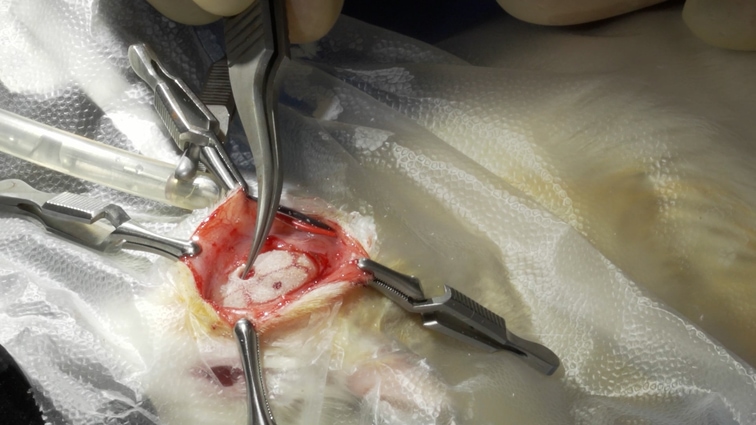
- Mark the point on the skull to drill using stereotactic positioning and an electrocautery device. The position is relative to the lamda or bregma landmarks and will depend on the region where the opsins need to be injected.
- Carefully drill into the skull using a dremel drill and a reasonably large sterilized drill bit.

Tip: Use a microscope to do this part of the procedure, as it is easier to identify when the drill is almost completely through the skull bone. Ideally, there should still be a paper-thin layer of bone left. It will become a pinkish color to indicate that it is almost through. Do not drill all the way through.
- Peel away the last thin layer of bone using fine forceps.
- Remove any fluid with absorbable spears.

Tip: Be careful not to break through the dura or break any blood vessels. This would cause excessive bleeding. The aim is to get a clean hole with all the bone burrs removed around the edge of the hole.
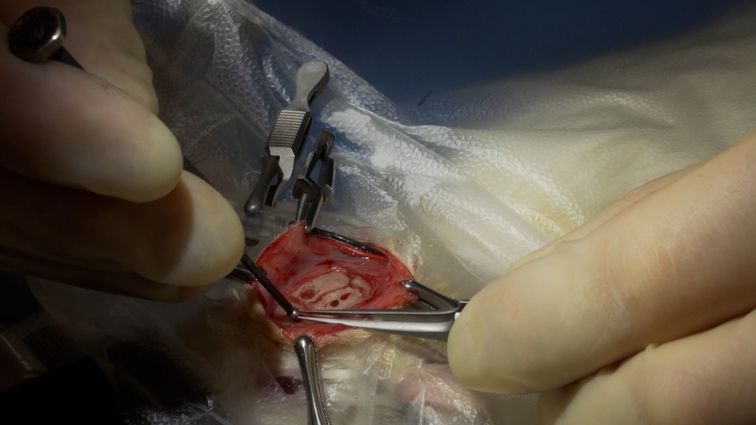
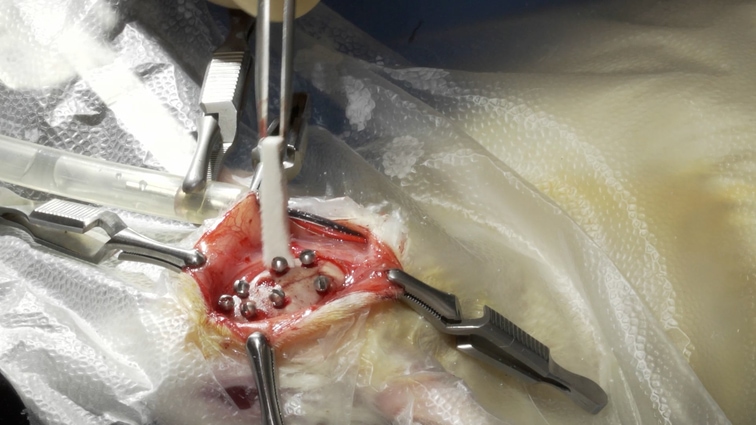
- Use a different drill bit to place the screws for the biopotential leads. The size of the drill bit will depend on the diameter of the screws.
- Drill the holes for the screws through the skull. These holes have a smaller diameter and cannot be cleaned of bone shards. It is important to drill this hole cleanly, or the screws may not fit. You may see some blood if the dura has been punctured. Clean this with a cotton bud.
- Screw the first screw using forceps and a screwdriver. Enlarge the hole by hand with a slightly larger drill bit if necessary. Two screws will attach the biopotential leads to the skull, while a further 5-6 screws will anchor the dental cement.
- Repeat this process for the subsequent screws.
Viral injection [00:48:15]
In this part of the procedure, you will inject the viral vectors into the correct part of the brain for opsin expression.
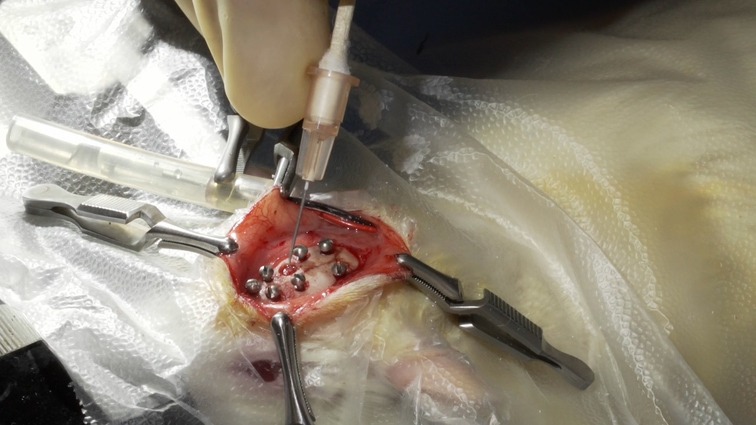
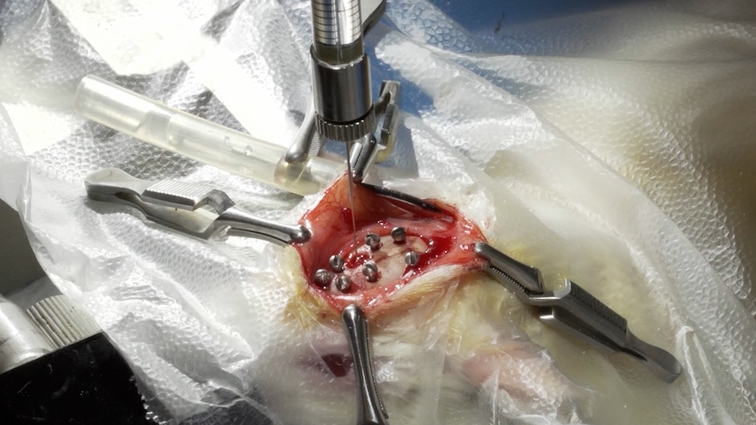
- Open the dura by slicing it with a 26 gauge needle. Use a swiping action.

Tip: Slicing the dura open will create an opening for the blunt needle syringe used for viral injection. Do not use the blunt syringe to penetrate the dura, as dura tissue may block the end of the syringe.
- Be careful not to slice through some of the blood vessels. If a blood vessel is damaged, use a piece of gelatin foam, also known as Gelfoam, which will act as a hemostatic.
- Attach the syringe pump, or infusion pump, to the stereotactic frame.
- Move the needle to one of the skull landmarks, such as bregma. Calculate the coordinates for opsin delivery in the brain.
- Inject the virus. Usually, each injection site will require a volume of 250 nanoliters of virus vector, but this is dependent on the vector. Note: The injection process can take up to half an hour due to the low infusion rate.

Tip: If the region of interest is elongated, you may need to place the fiber optic tip between two injection sites.
Attaching biopotential leads [00:52:23]
In this part of the procedure, you will attach the biopotential leads to the skull screws. In this example, the positive lead is attached to the screw over the motor cortex, and the negative lead is attached over the cerebellum.
- Clean away any residual blood.
- Remove the biopotential leads from the PE tubing.
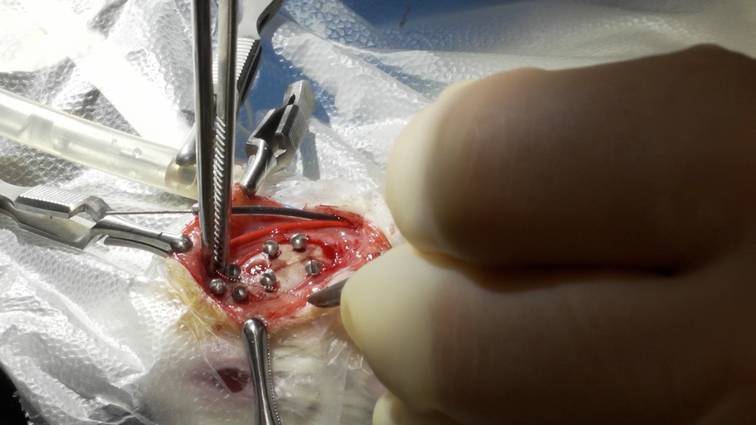
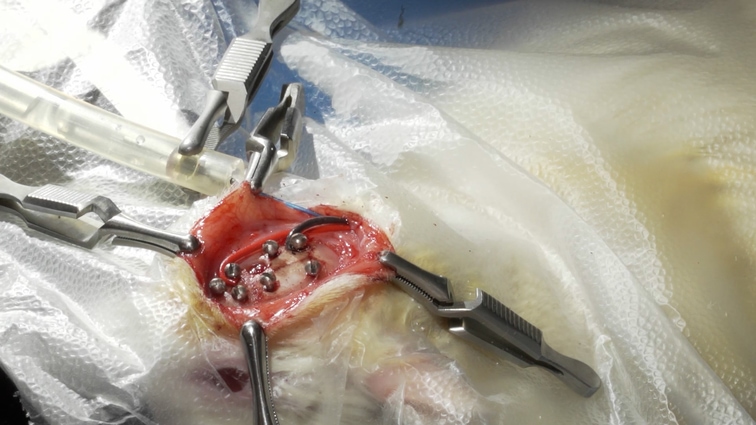
- Wrap the positive lead (red) around the screw as many times as possible. Keep the silicon sheath of the lead is between the screw and the tissue to prevent the leads from being shorted through the tissue.
- Repeat this for the negative lead (black).
- Ensure the bone around the leads is dry. This is important for dental cement adhesion.
Positioning the fiber optic probe [00:55:59]
In this part of the procedure, you will position the fiber optic cable vertically above the skull in the desired position.
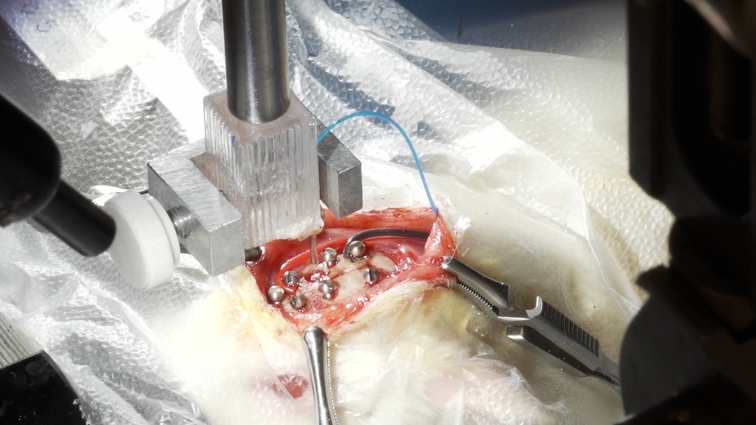
- Use an insertion tool to position the fiber optic lead vertically above the wound. This tool is a grooved clamp, which is open on one side to easily remove the clamp once the fiber optic cable is in place. Note: This insertion tool was custom-made. Use any device which will ensure perfect vertical orientation.
- Remove the fiber optic cable from the PE tube and attach it to the insertion tool. If more cable is needed, slowly and softly pull the cable through the tunnel. Note: Do not bend the fiber optic cable less than 5mm.
- Calculate the correct coordinates relative to the bregma landmark for the probe. Ensure that the area around the screws is dry.
Inserting fiber optic probe and securing it with dental cement [00:58:31]
In this part of the procedure, you will insert the fiber optic cable and secure it with dental cement.
- Mix the dental cement as prescribed by the manufacturer.
- Move the fiber optic probe down into the brain. The depth will depend on the coordinates for the region of the brain expressing the opsins.
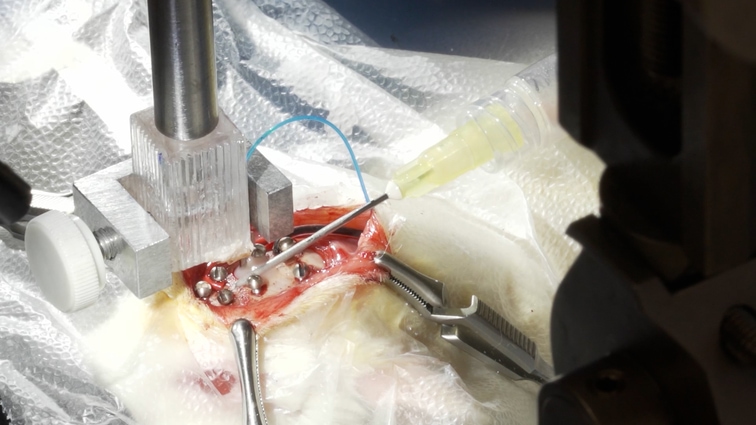
- Once the probe is in position, squirt on a layer of dental cement using a syringe and needle. The first layer should be relatively thin. The dental cement will not adhere to muscle or tissue. Mold this quickly as the cement will dry in 1-2 minutes.
- Build up the cement on the previous layers, especially around the probe, to hold it in place.
- After drying for a couple of minutes, check that the cement has solidified using a needle.
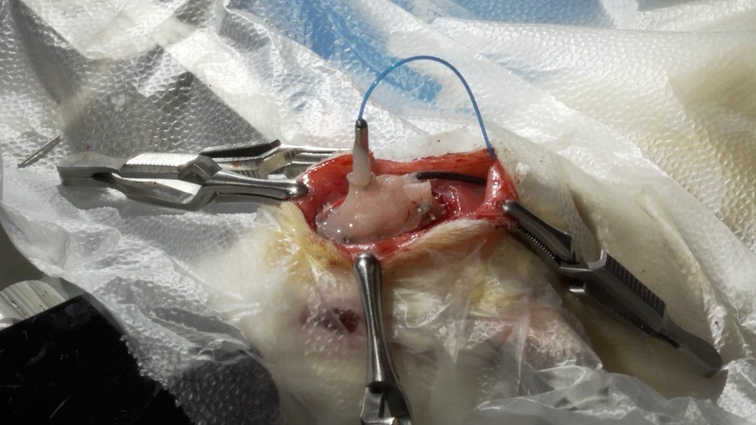
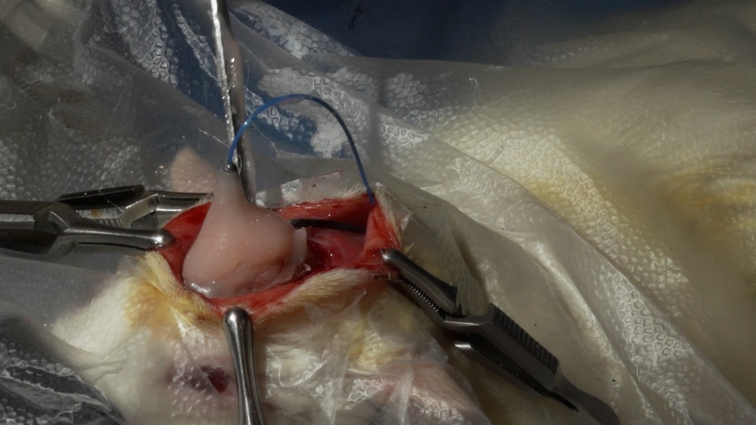
- Once the dental cement has hardened, detach the insertion tool from the probe.
- Use dental cement with a liquid consistency to fill any cracks. Use a thicker consistency to build up the mound around the probe.
- Wait until the mound is sufficiently dried.
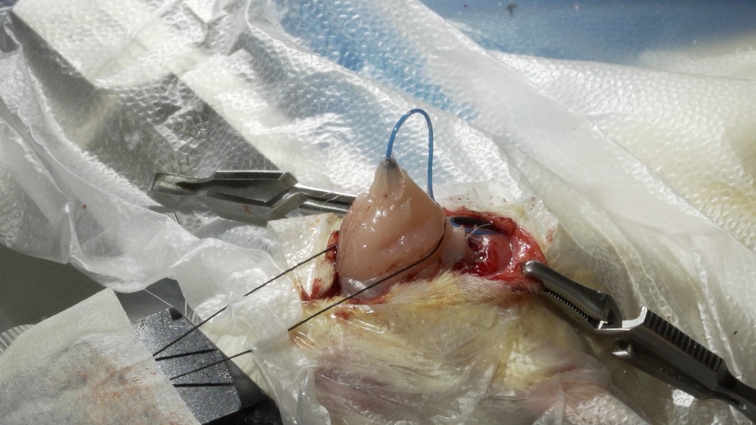
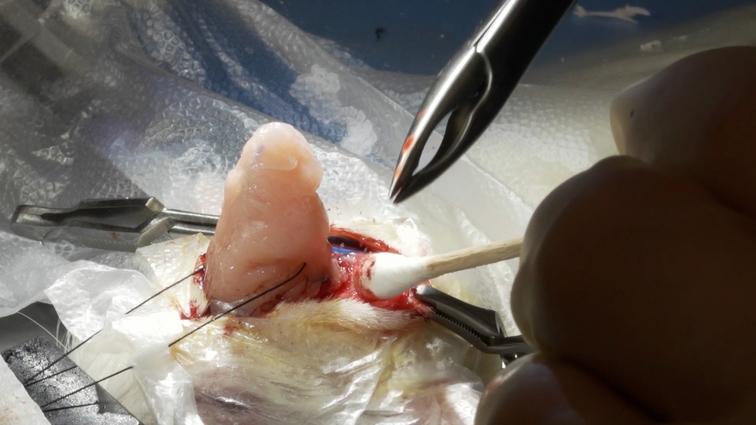
- Create a loop with a suture. Place the loop over the fiber optic cable and the mound.
- Tape one end of the suture to the stereotactic frame to pull the fiber optic cable towards the mound. Note: Do not bend the fiber optic cable less than 5mm.
- Cover the cable in dental cement. Use cement with a thicker consistency so that it does not pool in the wound.
- Shape the cement with your fingers. To prevent the cement from sticking to your gloves, dip them in ethanol first.
- Trim any sharp edges around the edge of the mound.
- Close the wound around the mound with a couple of sutures behind the mound.
- Cut the suture loop used to hold the fiber optic cable in place for cementing.
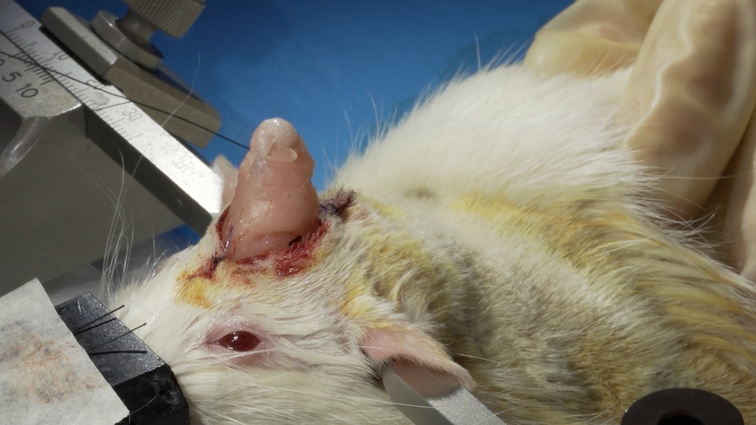
- Sew another suture in front of the mound.
- Remove the plastic surgical drape.
Closing the abdominal wound [01:15:37]
In this part of the procedure, you will close the abdominal wound used to insert the telemeter.
- Remove the animal from the stereotactic frame. Rotate the animal, and place it on its back in the surgical area.

Tip: Before continuing, it is good to administer an analgesic or painkiller such as Temgesic.
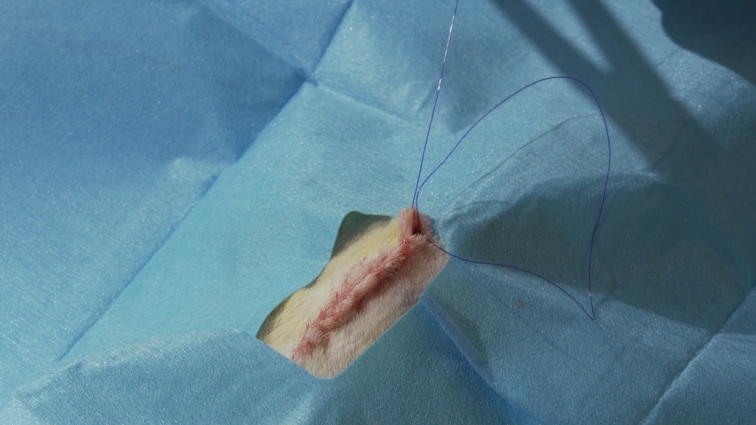
- Place a fresh surgical drape, and replace your gloves with a clean, sterile pair.
- Close the wound using subcuticular suturing with the biopotential leads and the fiber optic loop placed subcutaneously.

Tip: Using staples instead of sutures is quicker but less effective as the animal tends to remove the staples.
- Seal the wound with tissue glue.
- Administer a local anesthetic subcutaneously along the wound, tunnel track, and neck.
- Remove the rectal probe and oxygen monitor.
- Trim the animal's nails to prevent them from picking at their wounds.
Post-surgery [01:26:42]
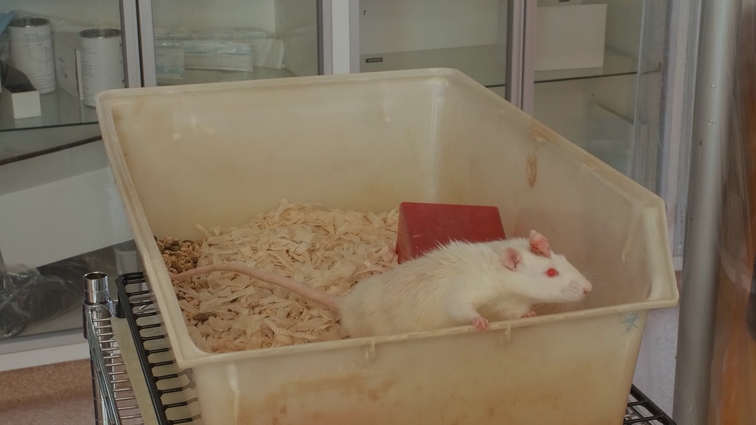
- The animal can now be removed from the isoflurane and allowed to wake up in its cage.
- Ensure there are no objects in the cage where the animal may get the dental cement headpiece stuck.
We hope you found these surgical instructions useful.
Please visit our comprehensive Optogenetic Applications for specialized information and useful resources relating to optogenetics applications and research.
If you have any questions, please contact your ADInstruments support representative who will be happy to provide specific information and assistance with your research requirements.
Return to Kaha Surgical Videos and Webinars Main Page »
Additional resources
- Optogenetic Activation of Selective Cardiac Autonomic Neurons (webinar) »
- Discover the Kaha Sciences Suite of products to set up your own Optogenetics Research »
- Translational Science Panel: Research Insights and Best Practice for Clinical Relevance (Webinar) »
Introduction to Optogenetics for Neuroscience Research
Are you thinking about using optogenetics in your neuroscience research but are unsure where to begin? Here we provide an overview of the key tools and techniques involved in optogenetics and its applications in the neuroscience field. Read our blog here »
LabChart Lightning
Data acquisition and analysis re-imagined. Make unique discoveries with unlimited freedom and flexibility. The perfect software for ECG, EMG and EEG data acquisition and analysis, LabChart Lightning is a powerful tool for biosignal recording and both quantitative and qualitative data analysis. Try LabChart Lightning »
